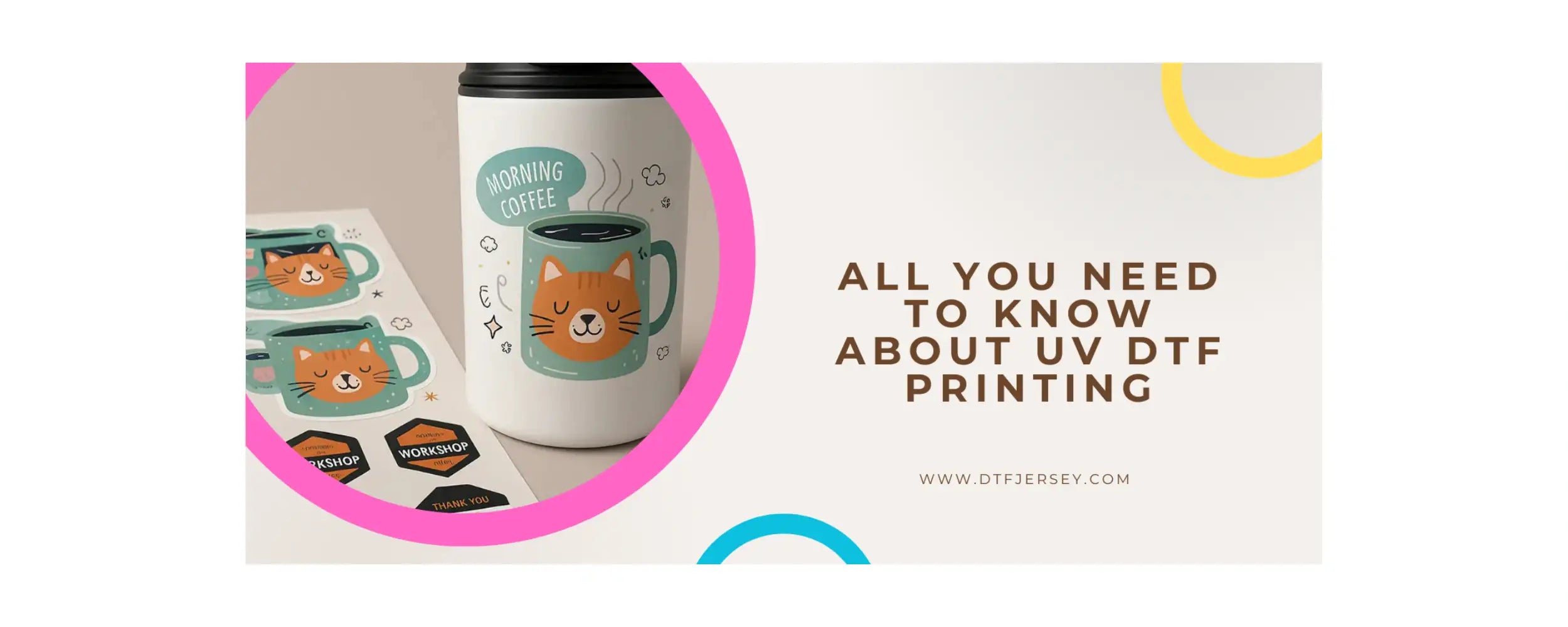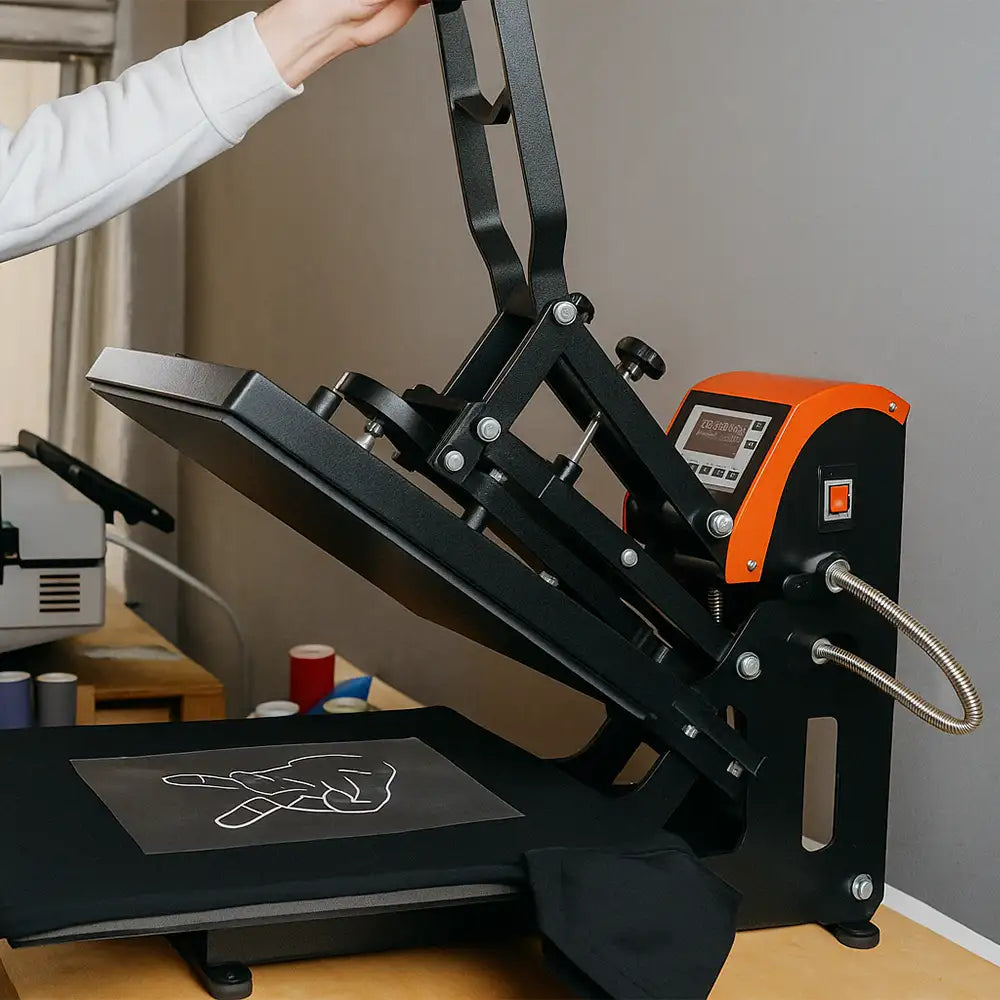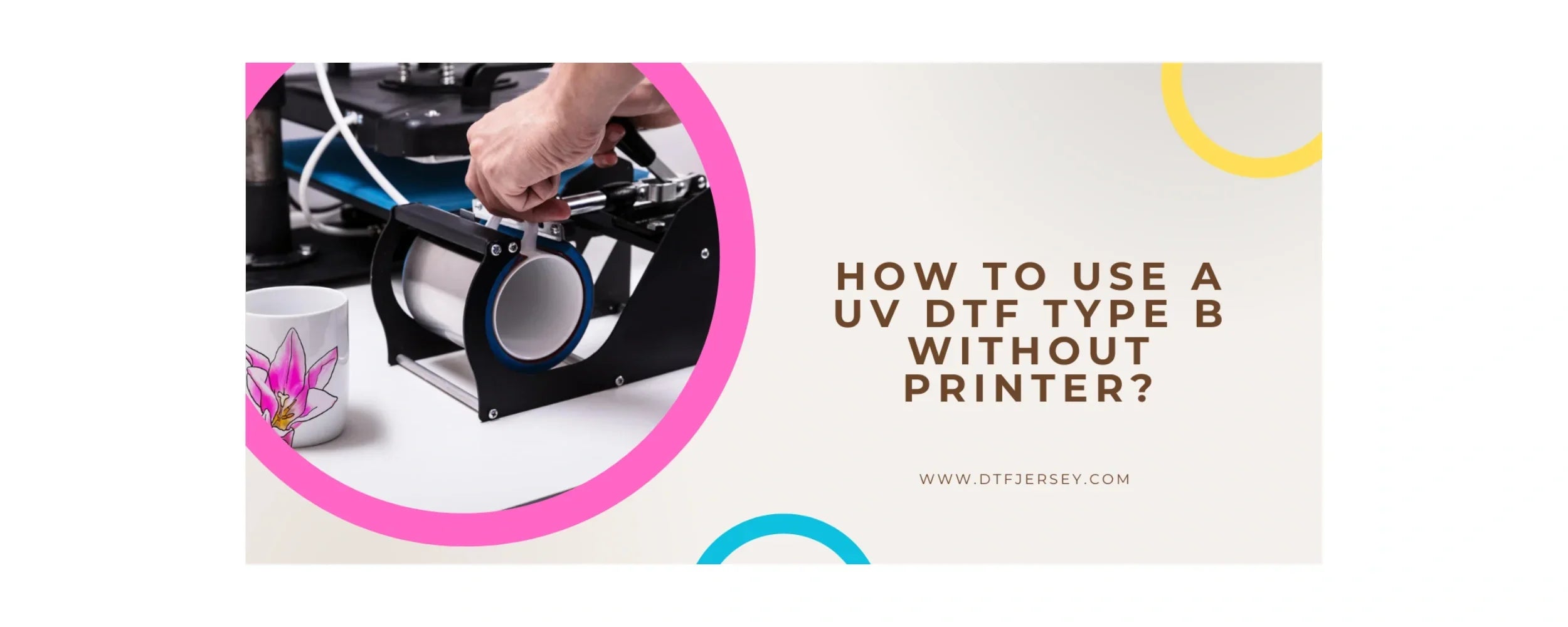Article: All You Need to Know About UV DTF Printing

All You Need to Know About UV DTF Printing
UV DTF printing is a new generation printing method that uses advanced UV ink with direct transfer film technology. The technology allows high-resolution and durable images to be applied to many different surfaces. As well as this, it is the preferred method for the production of promotional products and personalized items, offering longer-lasting results than solvent or water-based alternatives. UV DTF prints are also distinguished by their superior resistance to scratches and external factors.
What is a UV DTF?
UV DTF is an innovative transfer printing technology that has recently emerged in the digital printing industry. The method, which stands for “Ultra Violet Direct to Film,” works by directly applying UV-curable inks onto a special film. This technology enables high-durability prints to be made on various surfaces. Compared to traditional printing methods, it offers shorter drying times, sharper details, and superior color vibrancy. Additionally, it has applications in promotional products, personalized gifts, and decorative items.
UV DTF transfers bring surfaces to life flawlessly, without the need for heat. This feature makes it ideal for both end users and small businesses. The application process begins with printing the design onto a special film. It is then applied to the target surface by adding an adhesive layer. The method also stands out for being removable without damaging the surface. Therefore, it provides high efficiency when working on sensitive surfaces.
Another notable advantage for brands and designers is the availability of custom UV DTF transfer options. This allows users to bring their logos, patterns, or messages to life through completely personalized designs.
How Does UV DTF Transfer Work?
UV DTF is a digital transfer method that uses UV-curable ink and a strong adhesive layer. The design is printed onto a film and cured with UV light. It can then be easily applied to almost any surface. The method works as follows:
- Two types of film are used in the process. Film A is a sheet of paper on which the design is printed with UV ink. Film B is the film containing the adhesive layer. It is preferred for transferring the design to the surface.
- A high-resolution digital design is prepared in suitable formats such as EPS, PNG, and JPEG. Design is printed on a film using a UV DTF printer. It is then instantly cured using UV light.
- Film B is applied over Film A to laminate the two films. This step is performed using a lamination machine instead of a heat press.
- Finally, the design is printed onto the surface and ensured to adhere completely evenly. The film is then peeled off and the transfer process is complete.
Benefits of UV DTF Transfers
One of the most important advantages that distinguishes UV DTF transfers from traditional methods is that they offer strong adhesion without the need for heat or pressure. At this point, UV DTF wraps can be quickly adapted to various product types due to the technology's flexible structure. As well as this, UV DTF transfers offer aesthetically pleasing results with high-resolution details.
UV DTF cup wraps, which are frequently preferred in the gift and personalized product market, enable the easy printing of high-quality and durable images on commonly used objects, such as cups. In this regard, UV DTF transfers offer a successful solution for brands seeking to differentiate themselves in creative industries.

What's the Difference Between DTF and UV DTF?
DTF and UV DTF are two different transfer printing technologies used in the textile and surface printing industries. Either method allows designs to be transferred onto a variety of surfaces. However, they differ significantly in terms of the types of ink used, the surfaces they can be applied to, and print quality.
DTF printing is preferred for printing on textile products. In this method, water-based pigment inks are printed onto a special film. Immediately afterwards, they are transferred to the fabric using heat pressing. It offers advantages such as flexibility, breathability, and resistance to washing.
UV DTF technology, on the other hand, is more suitable for hard and flat surfaces. UV DTF uses special UV inks that cure under ultraviolet light, and during the transfer process, UV rays are used instead of heat to harden the ink. Additionally, this method is ideal for achieving high-resolution, durable, and scratch-resistant prints on various surfaces.
Check out our blog post to learn everything you need to know about DTF Printing
How Long Does UV DTF Last?
When properly applied to suitable surfaces, UV DTF prints generally retain their durability for 2 to 5 years. However, the duration may vary depending on the quality of the materials used, the environmental factors to which they are exposed, and the maintenance conditions.
Materials Used with UV DTF Transfers
UV DTF transfers, which have different application areas ranging from industrial uses to personal projects, adhere strongly to the surface and provide long-lasting and high-quality images. In addition, durable UV DTF stickers produced with this method, which is preferred due to its resistance to outdoor conditions, show high resistance to scratches, water, and UV rays, maintaining their visual appearance for a long time.

What Equipment is Needed for UV DTF Printing?
The UV DTF printing process has different requirements in terms of both hardware and materials compared to the DTF method. The basic requirements include a UV DTF printer, UV-curable ink, a varnished film base, and a backing film. A laminating machine is also required to fix the printed image to the substrate using a transfer process.
Is UV DTF Printing More Durable than Standard DTF?
UV DTF printing offers significant advantages in terms of durability compared to standard DTF printing techniques. In the UV DTF printing process, the ink is instantly dried using special UV rays, ensuring that the print adheres more strongly to the surface.
The method makes the print more resistant to scratches, fading, and chemical effects. In standard DTF printing, however, the drying process occurs through heat and air, so the adhesion of the print to the film surface may be more delicate compared to UV DTF.
UV DTF stickers labels produced using UV DTF technology stand out in commercial use due to their high durability and long lifespan. The ink, which is quickly and permanently fixed with UV rays, provides superiority in both aesthetic and functional terms.
Is UV DTF Just A Sticker?
UV DTF does not only serve as a sticker. It is a durable, high-quality visual solution produced using new-generation printing technologies. The method offers long-lasting prints with high color vibrancy thanks to special inks that cure with ultraviolet light.

Does UV DTF Need Heat?
The printing method uses UV rays to cure the ink, fixing it onto the film. Therefore, it does not require traditional heat application.
Can UV DTF Get Wet?
UV DTF prints are highly resistant to water thanks to special UV inks, providing surface protection. However, durability may decrease with prolonged exposure to water or mechanical abrasion, so the use of appropriate protective coatings is recommended.
Is UV DTF Expensive?
UV DTF printer price varies depending on the brand of the printing machine, the size of the printing area, and the printing resolution. In addition, the cost of UV inks and the complexity of the printing process also have a significant impact on the total cost. Labor and maintenance costs are other important factors that increase printing costs.
The type and quantity of products to be printed are among the factors that directly affect costs. In this regard, unit costs decrease with higher quantities, while they may be higher with lower quantities. Those seeking more affordable and high-quality solutions can explore the categories of DTF Jersey.
Is UV DTF Printing Eco-Friendly?
When evaluating UV DTF printing from an environmental perspective, taking into account factors such as the materials used, energy consumption, and waste management, it can be said that it is more sustainable than traditional printing methods.
The fact that UV inks do not contain solvents and that chemical vapor emissions are minimized during the printing process significantly reduces environmental pollution.
Where Can I Get UV DTF Film in Sheets?
DTF Jersey stands out as a reliable source for customized printing solutions. The company has expanded its product range with UV DTF film sheets, offering a comprehensive option for those seeking permanent and vibrant prints on hard surfaces. Available in A4, A3, and larger sizes, UV DTF film sheets provide flexibility for different projects. You can easily upload your designs and print them on these films.
One of the most important advantages of the products is the exceptionally fast printing process. All processes are completed in just a few seconds using a heat press. Additionally, the fact that it does not require tedious processes such as ink drying or surface cleaning before printing significantly speeds up the production process. This feature makes a significant difference in terms of time and efficiency, especially for small businesses and personal projects.
DTF Jersey ensures customer satisfaction by safely delivering your orders to your address. With our transparent tracking system, you can get real-time information about the status of your shipment or easily contact our customer service for support. With DTF Jersey, where quality and speed meet, your projects are now much stronger.
References:
-
https://www.eufymake.com/blogs/buying-guides/uv-dtf-printing
-
https://makerflo.com/blogs/craft-library/what-is-uv-dtf
-
https://madmonkeytransfers.com/blogs/news/uv-dtf-transfers
-
https://chameleontransfer.com/blogs/blogs/what-is-uv-dtf-transfers-and-how-do-they-work
-
https://www.visionsub.com/what-are-the-advantages-of-uv-dtf/
-
https://www.eufymake.com/blogs/buying-guides/uv-dtf-vs-dtf
-
https://coldesi.com/uv-printers/the-longevity-and-durability-of-uv-dtf-decals
-
https://www.eufymake.com/blogs/printing-guides/how-to-make-uv-dtf-transfers
- https://coldesi.com/uv-printers/choosing-between-dtf-printing-and-uv-dtf-
-
printing-understanding-the-differences-and-making-the-right-decision
-
https://stickerapp.ca/support/transfer/uv-dtf/are-uv-dtf-transfers-like-regular-stickers
-
https://www.xtool.com/blogs/xtool-academy/uv-dtf-vs-dt
-
https://www.oricsystems.com/Does-UV-DTF-need-heat-id40179036.html

